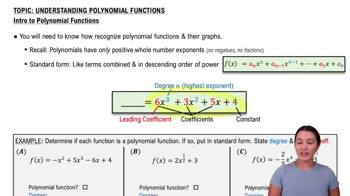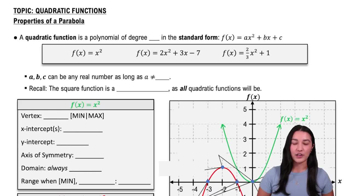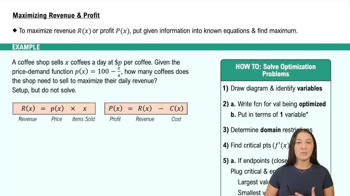Table of contents
- 0. Functions7h 52m
- Introduction to Functions16m
- Piecewise Functions10m
- Properties of Functions9m
- Common Functions1h 8m
- Transformations5m
- Combining Functions27m
- Exponent rules32m
- Exponential Functions28m
- Logarithmic Functions24m
- Properties of Logarithms34m
- Exponential & Logarithmic Equations35m
- Introduction to Trigonometric Functions38m
- Graphs of Trigonometric Functions44m
- Trigonometric Identities47m
- Inverse Trigonometric Functions48m
- 1. Limits and Continuity2h 2m
- 2. Intro to Derivatives1h 33m
- 3. Techniques of Differentiation3h 18m
- 4. Applications of Derivatives2h 38m
- 5. Graphical Applications of Derivatives6h 2m
- 6. Derivatives of Inverse, Exponential, & Logarithmic Functions2h 37m
- 7. Antiderivatives & Indefinite Integrals1h 26m
- 8. Definite Integrals4h 44m
- 9. Graphical Applications of Integrals2h 27m
- 10. Physics Applications of Integrals 2h 22m
4. Applications of Derivatives
Motion Analysis
Problem 3.6.23b
Textbook Question
Throwing a stone Suppose a stone is thrown vertically upward from the edge of a cliff on Earth with an initial velocity of 32 ft/s from a height of 48 ft above the ground. The height (in feet) of the stone above the ground t seconds after it is thrown is s(t) = -16t²+32t+48.
b. When does the stone reach its highest point?
 Verified step by step guidance
Verified step by step guidance1
To find when the stone reaches its highest point, we need to determine the vertex of the quadratic function s(t) = -16t² + 32t + 48. The vertex of a parabola given by ax² + bx + c is found at t = -b/(2a).
Identify the coefficients from the quadratic equation: a = -16, b = 32, and c = 48.
Substitute the values of a and b into the vertex formula: t = -b/(2a). This gives t = -32/(2 * -16).
Simplify the expression to find the value of t. This will give you the time at which the stone reaches its highest point.
Once you have the value of t, you can verify by substituting it back into the original equation s(t) to find the height at this time, ensuring it is indeed the maximum height.
 Verified video answer for a similar problem:
Verified video answer for a similar problem:This video solution was recommended by our tutors as helpful for the problem above
Video duration:
4mPlay a video:
Was this helpful?
Key Concepts
Here are the essential concepts you must grasp in order to answer the question correctly.
Quadratic Functions
The height of the stone is modeled by a quadratic function, which is a polynomial of degree two. In this case, the function s(t) = -16t² + 32t + 48 represents a parabola that opens downward due to the negative coefficient of the t² term. Understanding the properties of quadratic functions, such as their vertex and axis of symmetry, is essential for determining the maximum height of the stone.
Recommended video:

Introduction to Polynomial Functions
Vertex of a Parabola
The highest point of a downward-opening parabola, like the one representing the stone's height, is called the vertex. The vertex can be found using the formula t = -b/(2a), where a and b are the coefficients from the quadratic equation. This point corresponds to the time at which the stone reaches its maximum height, which is crucial for solving the problem.
Recommended video:

Properties of Parabolas
Maximizing Functions
Maximizing a function involves finding the input value that yields the highest output. In the context of the stone's height, this means determining the time at which the height function s(t) reaches its maximum value. This concept is fundamental in calculus, as it often involves taking the derivative of the function, setting it to zero, and solving for critical points to find maximum or minimum values.
Recommended video:

Maximizing Profit & Revenue

 6:29m
6:29mWatch next
Master Derivatives Applied To Velocity with a bite sized video explanation from Nick
Start learning




